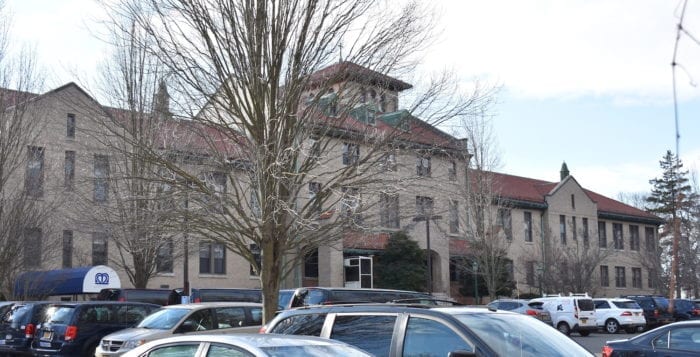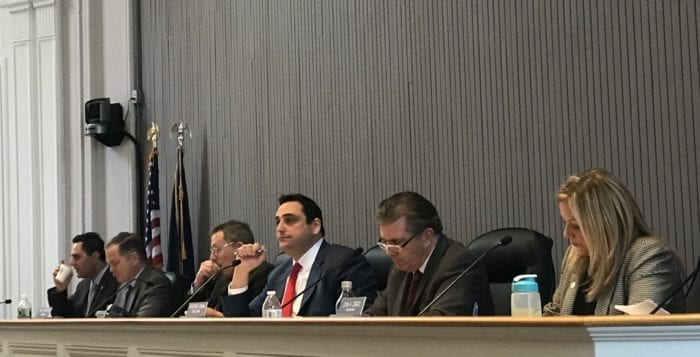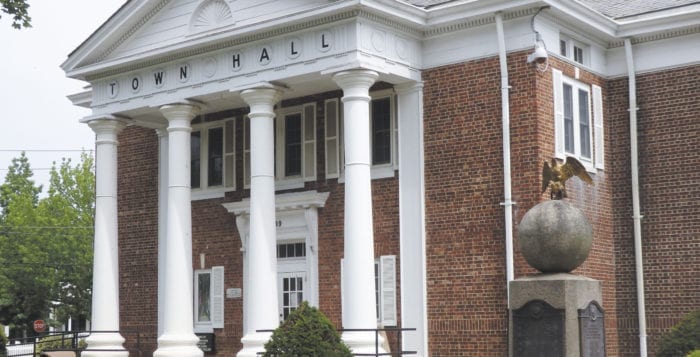Suffolk County officials have set their sights on the wallet of a disgraced ex-police chief, looking to recoup costs of litigation.
Nearly three months after Suffolk County legislators tabled a proposal to sue former police chief James Burke over the $1.5 million settlement it paid out to his victim, the Suffolk County Legislature passed a measure March 5 to begin a lawsuit in an attempt to recoup compensation and salary Burke had received up to when he resigned in October 2015.
“Burke clearly breached the oath he took as an officer and the duty he owed the county to serve in his capacity faithfully and lawfully,” Legislator Rob Trotta (R-Fort Salonga) said. The Smithtown legislator was the main sponsor of the bill.
The bill would authorize the county attorney to file a lawsuit by using “the faithless servant doctrine,” which dates back to the 19th century and allows employers to recoup all compensation paid to an employee while they acted in a disloyal manner.
The resolution was drafted to recover the compensation paid specifically to Burke and no other county employee.
“It feels great,” Trotta said. “Finally a victory for Suffolk County taxpayers.”
Originally, Trotta wanted to recoup money from a 2018 settlement the county paid to Christopher Loeb, who was shackled and beaten by Burke back in 2012 as part of a cover-up. County attorney Dennis Brown said at a December 2018 Ways and Means Committee public hearing there was no basis for a possible lawsuit and there was no way to recover or recoup the settlement dollars paid in the lawsuit, according to previous reporting by TBR News Media.
In the federal civil lawsuit, the county agreed to pay the settlement amount for the civil rights offenses as they were the ex-police chief’s employer at the time. The county also paid the settlement for the actions of six other police officers who helped cover up Burke’s actions when he allegedly beat a handcuffed man for stealing a duffle bag from his vehicle.
At the same hearing, Howard Miller, a Garden City-based attorney with the law firm Bond Schoeneck & King, presented a case for the county suing Burke for his wages and compensation paid by the county under the faithless servant doctrine.
Miller mentioned that he had successfully represented clients at the state level in similar lawsuits, including the William Floyd School District.
“This doctrine is designed to create a deterrent to future acts like this, of corruption and misconduct,” Miller said at the December 2018 public hearing.
Brown also said in a statement that the Suffolk County Charter authorizes either the county executive or the Legislature to direct legal action. The resolution that was passed by the Legislature provides a framework specific to that action, but does not limit the ability of the county executive to pursue additional legal action.
Trotta hopes the measure sets a precedent that anyone, whether in government or not, will be held accountable for their actions.
“Former District Attorney Spota empowered and conspired with Jim Burke and Chris McPartland,” County Executive Steve Bellone (D) spokesperson Jason Elan said in a statement. “Clearly, all three fall under the faithless servant doctrine so any legal action to recoup taxpayer-funded salary and benefits should include each individual.”
According to a representative from the county executive’s office, Bellone signed the legislation to recover salary and benefits from Burke on March 11 and further directed a similar suit be filed against ex-District Attorney Thomas Spota and his top aide who have also been indicted on related charges.
















